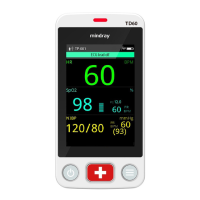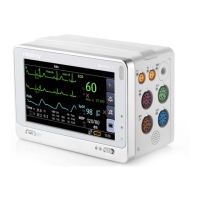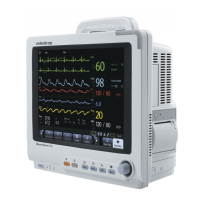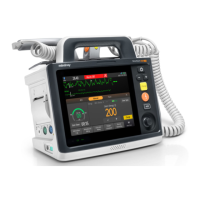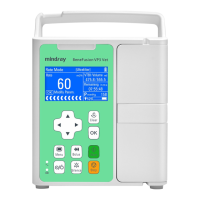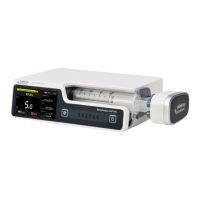11 - 6 BeneVision N Series Patient Monitor Operator’s Manual
11.4.4.6 Lead Placement for Surgical Patients
The surgical site should be taken into consideration when placing electrodes on a surgical patient. For example,
for open-chest surgery, the chest electrodes can be placed on the lateral chest or back. To reduce artifacts and
interference from electrosurgical units, you can place the limb electrodes close to the shoulders and lower
abdomen and the chest electrodes on the left side of the mid-chest. Do not place the electrodes on the upper
arm. Otherwise, the ECG waveform will be very small.
• To reduce the hazard of burns during use of electrosurgical units (ESU), the ECG electrodes should
not be located between the surgical site and the ESU return electrode.
• Never entangle the ESU cable and the ECG cable together.
• When using ESU, never place ECG electrodes near the grounding plate of the ESU, as this can cause a
lot of interference on the ECG signal.
11.4.5 Choosing the ECG Lead Type
To choose ECG lead type, follow this procedure:
1. Select the ECG numeric area or waveform area to enter the ECG menu.
2. Select the Setup tab.
3. Set Lead Set according to the lead type you are going to use. The default lead type is Auto. In this case, the
monitor automatically detects the lead type.
11.4.6 Checking Paced Status
It is important to correctly set the paced status before you start monitoring ECG. The paced symbol is
displayed when Paced is set to Ye s . The pace pulse markers “|” are shown on each ECG waveform when the
patient has a paced signal. If Paced is set to No or if the patient’s paced status is not selected, the symbol will
be shown in the ECG waveform area.
To change the paced status, follow this procedure:
1. Select the ECG numeric area or waveform area to enter the ECG menu.
2. Select the Pacer tab.
3. Set Paced to Ye s or No.
You can also change the patient’s paced status from the Patient Management menu. For more information, see
5.4.1Entering the Patient Management Menu.
If you did not set the paced status, the monitor issues a prompt tone when pace pulse is detected. At the same
time, the paced symbol flashes and the message Please check if the patient has a pacemaker? appears in
the ECG waveform area. Check and set the patient’s paced status.
• For paced patients, you must set Paced to Yes. If it is incorrectly set to No, the monitor could mistake
a pace pulse for a QRS complex and fail to alarm when the ECG signal is too weak. On ventricular
paced patients, episodes of ventricular tachycardia may not always be detected.Do not rely entirely
upon the system’s automated arrhythmia detection algorithm.
• False low heart rate or false asystole alarms may result with certain pacemakers because of
pacemaker artifacts, such as electrical overshoot of the pacemaker overlapping the true QRS
complexes.
• Do not rely entirely on heart rate meter alarms when monitoring patients with pacemakers. Always
keep these patients under close surveillance.
• The auto pacer recognition function is not applicable to pediatric patient, neonatal patients, or
patients with NMT monitoring.
• For non-paced patients, you must set Paced to No.
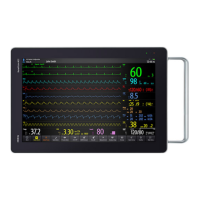
